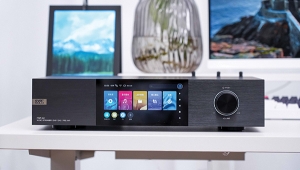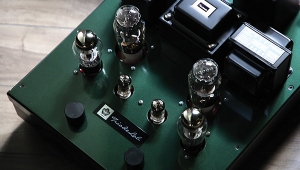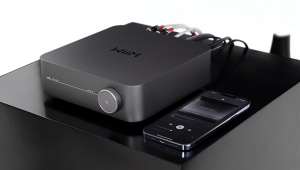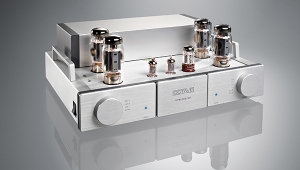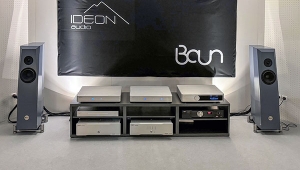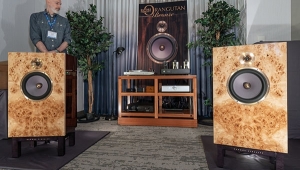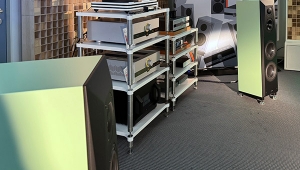| Columns Retired Columns & Blogs |
The Striking Master & Dynamic MH40 Sealed Around-Ear Headphone Measurements
Measurements
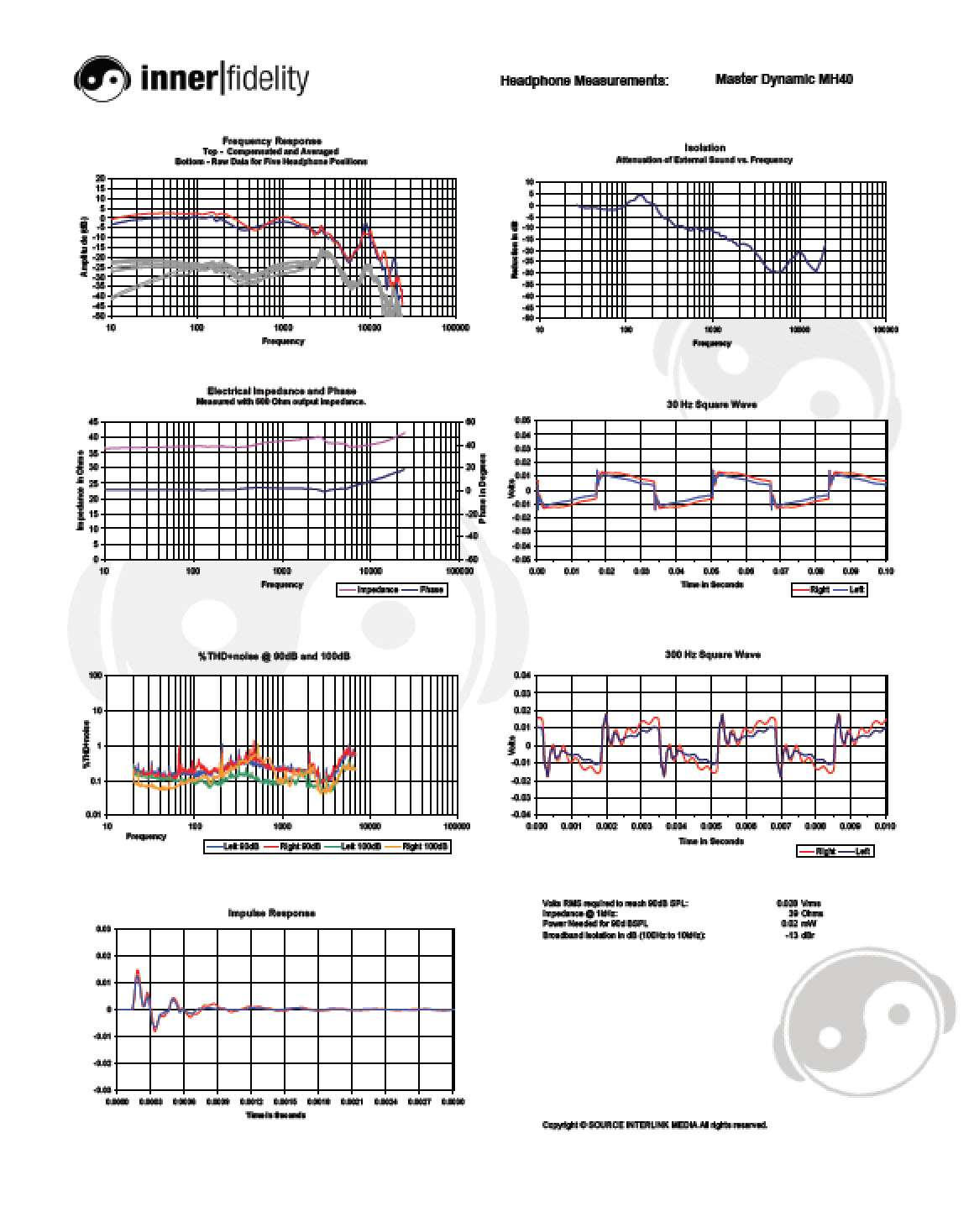

Click on graphs image to download .pdf for closer inspection.
Raw frequency response plots show a headphone with significant changes in response due to positional changes on the ear. These cans were quite challenging to move on the ears and get good measurements; I spent quite a bit of time in each position to ensure a good seal. Because it was so cumbersome, I did allow one set of measurements with poor bass response into the set as it probably is indicative of how they will get heard on the head at times. You can see that changes in seal effects response all the way up to around 2kHz—this is fairly unusual.
Compensated frequency response plots show a headphone with an overall very slightly warm tilt, but a somewhat uneven response. Bass response between 10Hz and 200Hz is elevated by about 5dB—depending on where you want to call the zero line. You could also say these cans are very flat from 10Hz to 1kHz with a broad 5dB dip in the heart of the midrange. I hear it as a bit of both. My ideal compensated plot would have the bass drop down 5dB starting at about 100Hz, and then flat thereafter to 3kHz.
Treble response really drops off after 1kHz into a deep notch centered at ~6kHz. Fortunately, the rebound at 10kHz helps to balance out the treble response relative to the mids and bass. Unfortunately, the treble does sound somewhat artificial and papery to my ears as a result.
30Hz square wave shows a slightly bowed-up waveform top, which usually indicates a slightly warm sounding bass. The very flat top with no downward bowing, and the very low distortion in the bass, are good indicators for a very tight sounding bass response, which I did hear.
300Hz square wave response, and the impulse response, both show a nicely quick initial transient, but also show some moderate amount of subsequent ringing. The initial transient, however, is fairly clean; in listening test I found the initial transient to be clean enough to provide basic imaging, and not sound harsh or strident. But it also seems some of the subsequent noise gets in the way of the finesse and resolve needed to provide continuously layered and natural imaging.
THD+noise measurements are very good. With the 100dBspl curve lying entirely below the 90dBspl curve, these headphones should have excellent power handeling.
Impedance plot shows a nominally 37 Ohm headphone. I does have an unusual rise that begins at about 400Hz and extends to about 2kHz where it hits 40 Ohms and then works its way back down. I'm not sure what to think of this other than it has something to do with achieving a rising raw FR from 400Hz to 3.5kHz, which is theoretically desirable in the Harman target response. Worthy of note is that the NAD VISO HP50 measurements show a similar artifact, and a similar rise from mid-treble to 3.5kHz.
Isolation plots show only moderate reduction of outside noise relative to other headphones in this category. Broadband isolation is about 13dB, 16-18 db is typical for this type of headphone. Another interesting thing to note is the peak centered at 150Hz. This is a peak from the resonant frequency of the pads bouncing on the side of your head. It shows negative isolation, meaning that outside sound is amplified at these frequencies. You can also see a series of little wiggles in the frequency response at 150Hz that is related to this phenomena. At the bottom of this page I've included the measurements of the MH40 with the prototype leaky pads. You can see that they don't exhibit these features as strongly as the production MH40 because of the leaky pads.
With 28mVrms needed to achieve 90dBspl in the headphones, these cans will be driven to solid listening levels by portable players.
Measurements with Prototype Open Pads
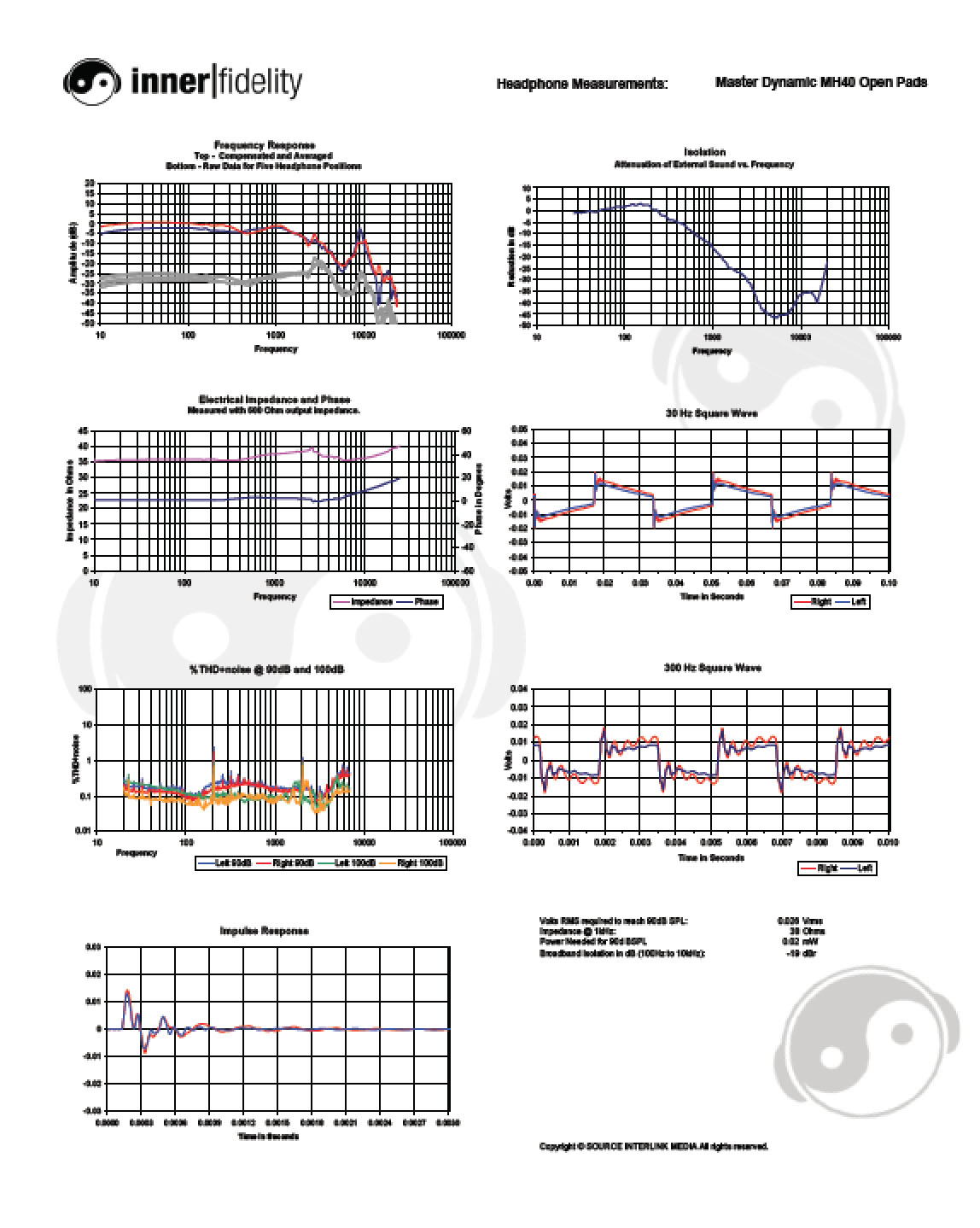
Click on graphs image to download .pdf for closer inspection.
The above measurements are for the Master & Dynamic MH40 with prototype leaky pads, as opposed to the very tight acoustic seal provided by the stock pads. I won't got through the whole measurement package here, but will simply mention some things different about the sealed vs. leaky pads.
First thing to notice is that the leaky pads provide more stable measurements in the raw responses as the headphones are moved around on the head. This makes sense because the pads have a designed leak in them, and other changes in seal as the headphones are repositioned have less effect because the headphones are already leaky. You'll also notice the lossy seal provides less bass response.
I think the most interesting change is in the isolation response. First, as mentioned above, with the stock pad you get a resonant peak at 150Hz as the headphones bounce against your head on the cushion of trapped air between the headphones and head. With the leaky pads, some of this bounciness (quality of resonance; Q) is lost, and the size of the negative isolation peak and wiggles in the frequency response at 150Hz becomes lower.
Also very interesting, and somewhat counterintuitive, is that the leaky pads provide better overall isolation. You can see the stock pads provide -30dB isolation but the leaky pads provide up to -45dB isolation. The reason for this is because the tight seal of the stock pad provides better mechanical coupling of acoustic energy from the outside air, to the headphones, and then to the stiff sealed acoustic space between headphones and head, and finally into the ear canal. In other words, the stock pads create a stiff mechanical connection to the head letting more outside vibration through. With the leaky pads, some acoustic energy is lost through the leak, which reduces the coupling efficiency to the ear of mechanically born vibration. The result is better isolation, but also better immunity to cable born mechanical noise as well. This would be a bit quieter headphone. But it's also less punchy sounding...and frankly, I like the stock version quite a bit better.
- Log in or register to post comments
















